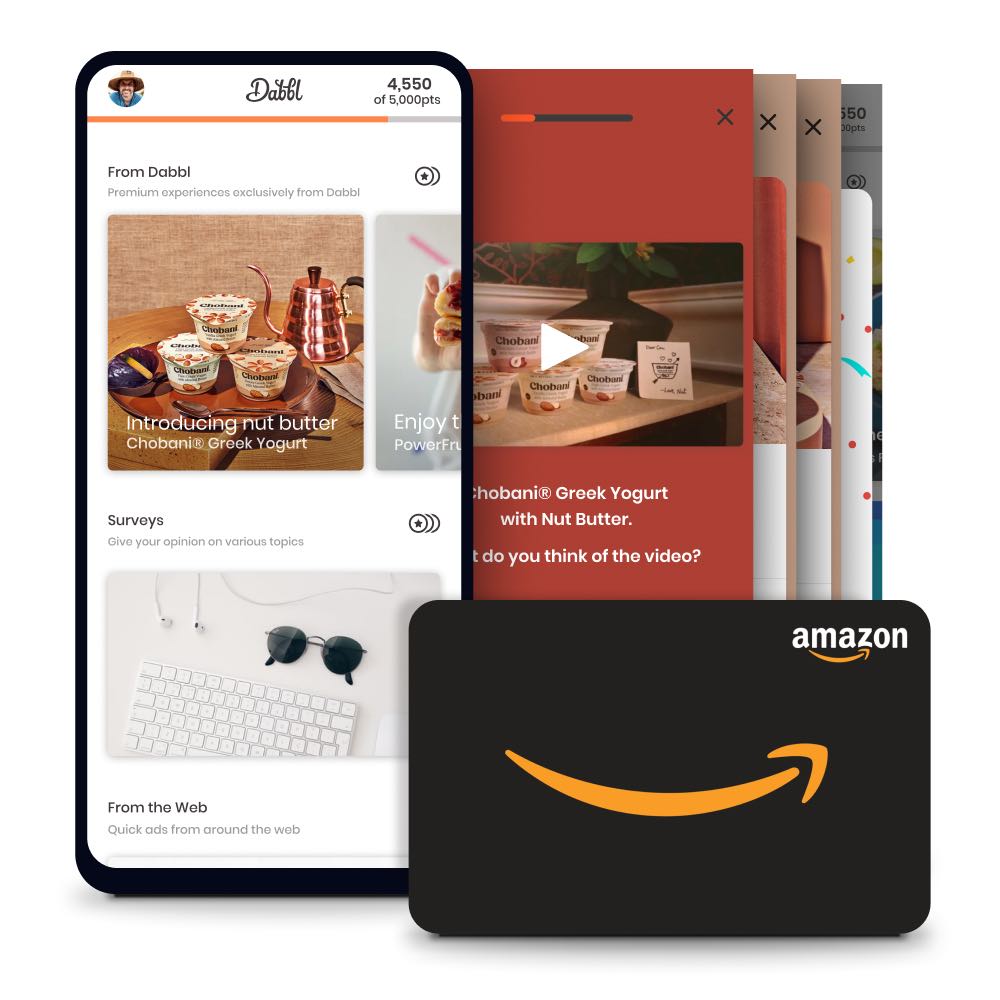Many younger generations are not building deep relationships with whole categories of products. They experience many brands as undifferentiated.
There is a brand-building gap among these generations.
They’re spending more time on their phones and in ad-free Netflix than they are with old school brand-building mediums like TV. Meanwhile, brands are focusing much of their digital marketing budgets lower in the funnel on short term sales activation rather than top of funnel, long term brand-building.
Let’s look at where the data — and common sense — tell us the greatest opportunities lie for brands wishing to create deeper bonds with these younger consumers.
What is the most effective use of your marketing budget for creating business value in this noisy, digital world?
Younger Generations See Whole Categories of Products as Undifferentiated
Many Gen Ys & Zs can tell you the fine differences between social apps but not, say, automobile brands.
“Insta is for curated art and photography, and Snapchat is silly, imperfect, candid fun.”
Compare that level of knowledgable brand differentiation with this:
“a car is a car. as long as it gets from point a to point b it’s good”
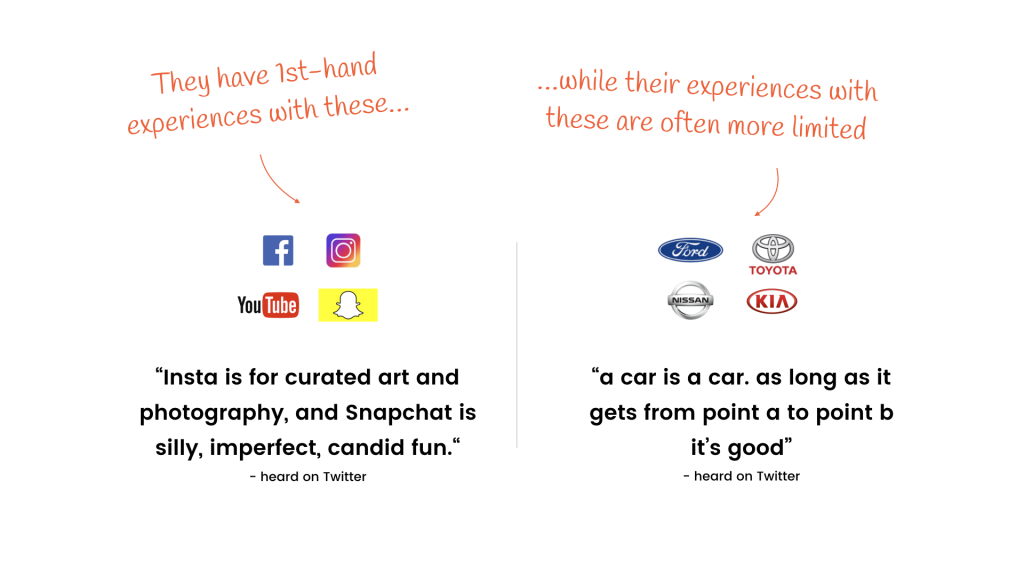
If you have not personally experienced what this “these products are all the same” mindset feels like first-hand, imagine shopping in a foreign country.
“There’s nothing like shopping in a foreign supermarket to remind you why brands matter. It takes ages, you don’t recognize anything, have to pick things up and read labels to work out what to buy. Brands aren’t about love, they’re about ease.”
Many products are seen as undifferentiated by younger people who have not grown up developing relationships with those brands.
Why? What’s Different Now?
In the past, generations of 30 second TV ads on limited media channels filled brand relationship gaps & built multibillion dollar brands along the way.
But people now spend more time on mobile devices and ad-free Netflix. How are brand relationships built today?
The most pervasive advertising format, the banner ad, delivers reach. But it’s a poor story teller.
Mobile video can be a powerful format. But video ad view time is shrinking. People’s patience for ads that interrupt their media consumption, however, is growing thinner by the day. Six seconds has become to the new 30 seconds.
“Following YouTube and Facebook, network television has begun implementing six-second commercials. This marks the first major initiative in commercial length since the introduction of 15-second ads in the mid-1980s.”
6 seconds is limited time to tell your brand story & build trust.
Rich media, influencer marketing, content marketing and other marketing methods (that may offer value in exchange for attention) can help build brands. But they often take deft practitioners to cut through the clutter, navigate people’s highly developed marketing ambivalence and scale.
Because digital brand-building hasn’t been as simple as running 30 second tv spots like days of old, many have put their digital advertising focus much lower in the funnel, on short-term sales activation, not upper funnel brand-building.
The result? For many Gen Ys & Zs, strong brand relationships are simply not being built.
These generations see whole categories of seemingly undifferentiated products solely through the lens of price.
Which can be your brand’s greatest opportunity.
Your Great Opportunity: The Differentiated Brand
“The single most important decision in evaluating a business is pricing power. If you’ve got the power to raise prices without losing business to a competitor, you’ve got a very good business. And if you have to have a prayer session before raising the price by 10 percent, then you’ve got a terrible business.”
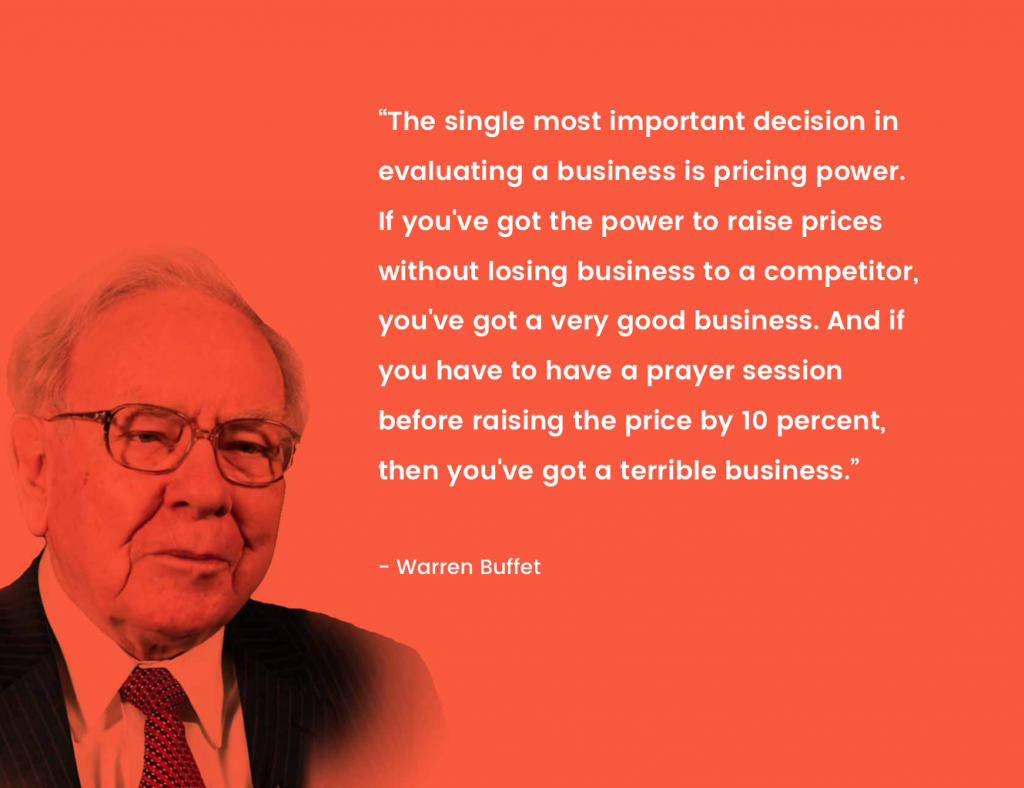
The power of trusted brands has not changed, but how people build trust in them has.
How do people build trust in brands today?
Context matters. Not only is the content of your marketing message important, the context of how that message reaches people has much more importance now. Where and how your brand engages consumers matters now more than ever.
Here are three things to consider when reaching modern consumers and building value in your business.
1. Decide if building brand value will be your strategy for adding greater value to your business
What is your strategy for adding value — shareholder value or otherwise — to your business? Decide whether brand-building is a core part of that strategy.
84% of the value of all businesses is now intangible value
Business value increasingly comes from intangible assets like brand, not tangible assets like factories & fleets of trucks.
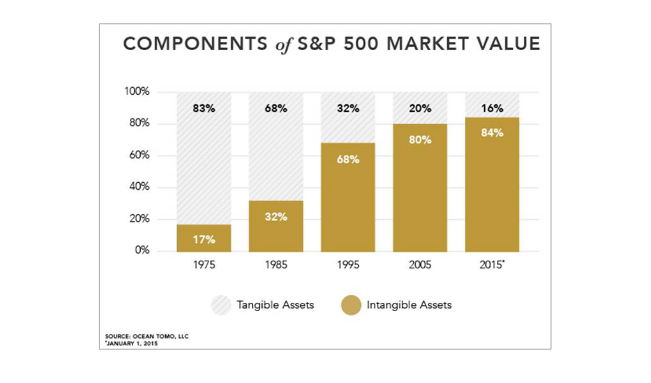
Source: Ocean Tomo LLC
Brand value accounts for about 20% of the total market capitalization of businesses.
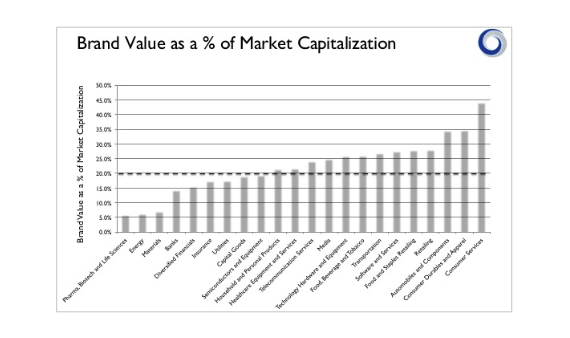
Source: Jonathan Knowles, Type 2 Consulting, analysis of data from the annual brand value league tables published by Brand Finance, Eurobrand, Interbrand and Millward Brown for the 6 years 2010 to 2015.
In fact, some call brand building “the most valuable business tool ever invented.”
Strong brands far out-perform the average businesses in terms of shareholder returns, with the BrandZ portfolio of strong brands growing by 125% from 2006-2017 vs the S&P 500’s 82%.
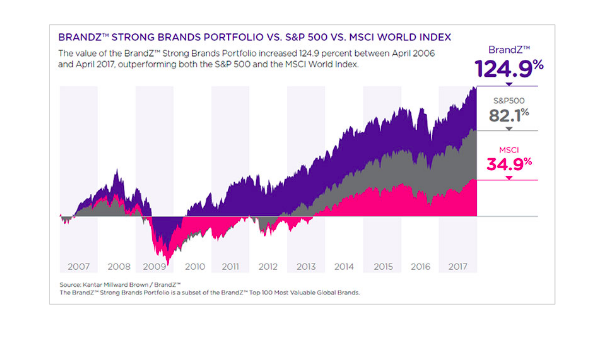
Source: Kantar Millward Brown, BrandZ, 2017.
Strong brands command a 13% price premium over weak brands, and 6% above the average brand
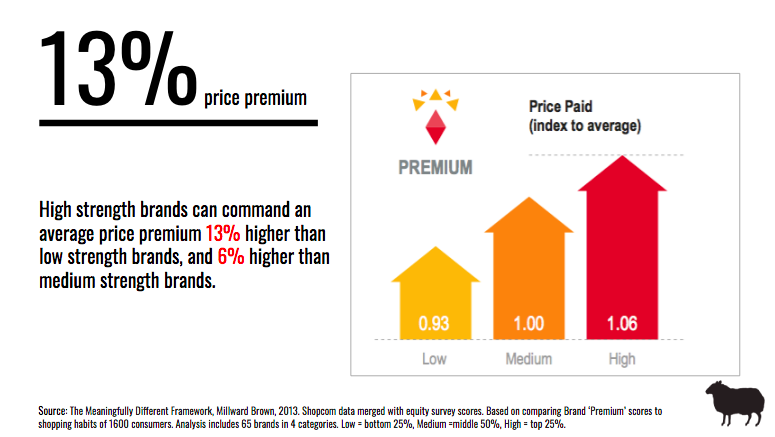
Source: The Meaningfully Different Framework, Millward Brown, 2013.
A 10% increase in share of voice can decrease people’s price sensitivity by from 5% to as much as 20%
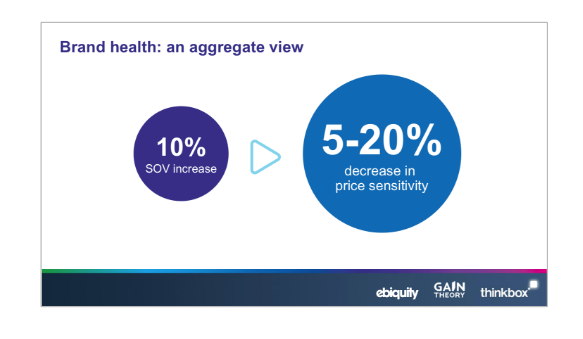
Source: Thinkbox, Ebiquity, Gain Theory, ‘Profit Ability: The business case for advertising
A 1% increase in brand health (specifically brand consideration) can drive an uplift of 0.5-1.5% total annual sales
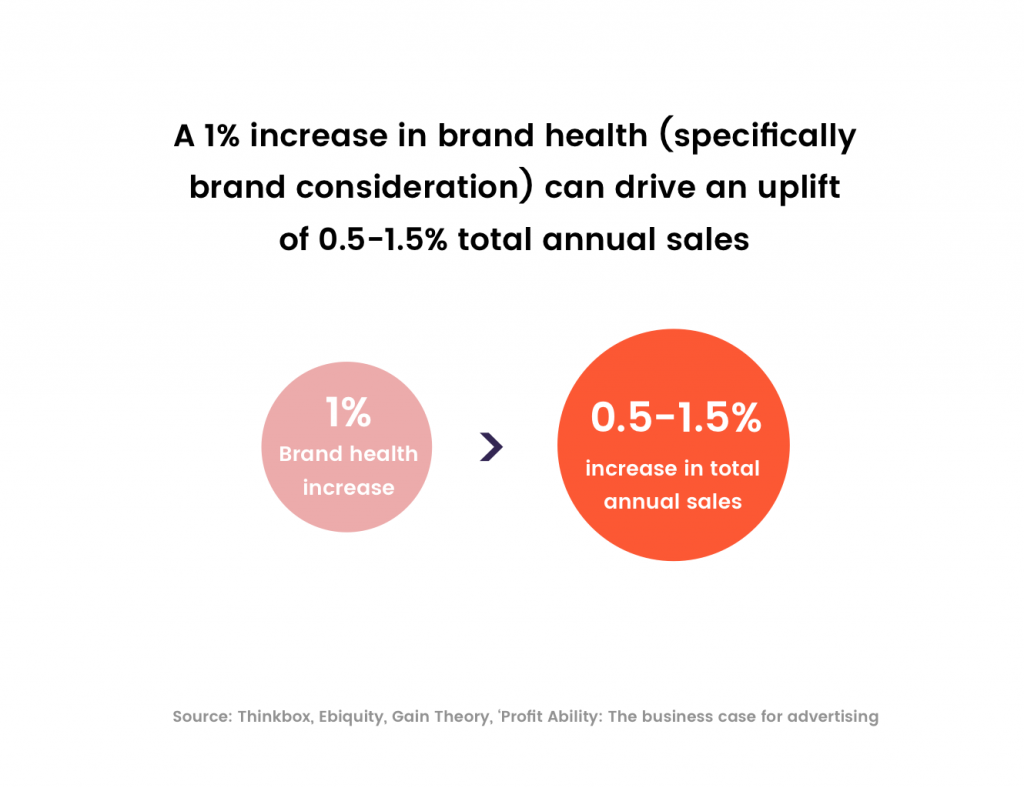
Source: Thinkbox, Ebiquity, Gain Theory, ‘Profit Ability: The business case for advertising
2. Define the mix of long-term brand-building & short-term sales activation
Define the big picture allocation of the marketing budget for top funnel and lower funnel activities.
Brand-building activity drives stronger sales growth over periods of 6+ months than the temporary uplifts driven by short-term sales activation.
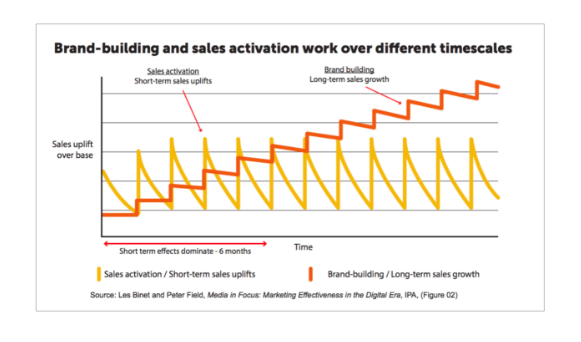
Source: ‘Effectiveness in the digital era’, 2016, Binet & Field, The IPA
The 60/40 Split
Research suggests that the optimum split in investment between brand-building and sales activation is, on average, 60% brand-building and 40% activation.
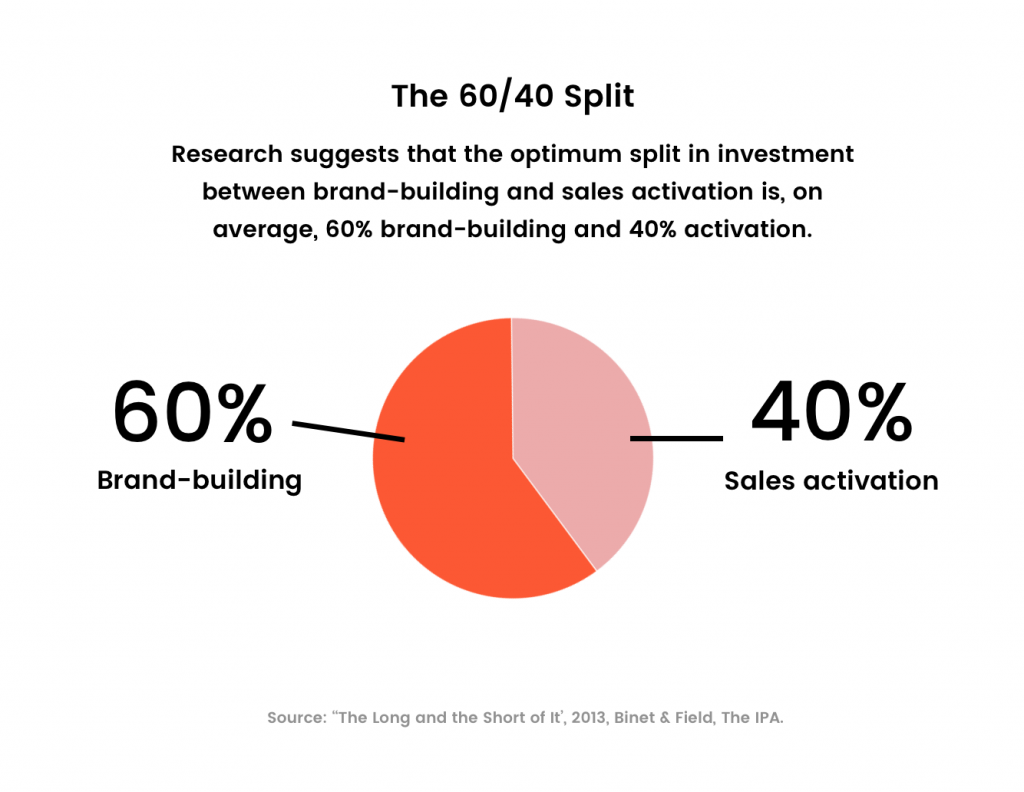
Source: ‘The Long and the Short of It’, 2013, Binet & Field, The IPA.
3. Define the metrics for brand-building effectiveness
Define how you will measure whether your brand-building activities are effective. Below are a few examples of campaign-level metrics for brand-building activities.
Time spent with your brand
How long people spend with your brand. Is it long enough to tell your brand story? And is that quality time? Are they opting in? Do they want to spend this time with your brand or are they simply “tolerating it”?
Time to beat: 6-30 seconds per session.
Engagement
Are people engaging? Are they tapping and interacting? Are they discovering your brand by involving themselves in it?
Numbers to beat: 2-5 engagements per session.
Brand Recall & Favorability Lift
Is your marketing making an impact or is it lost in the noise? Are the people who engaged with your marketing more likely to recall your brand than those who did not engage? Do they see your brand more positively after engaging with it?
Numbers to beat: 10%+ brand recall lift. 10%+ brand favorability lift.
A Brand-building Example
As an example, here is a summary of the brand-building effectiveness for the Dabbl attention marketplace.
- 100% opt-in
- 35 seconds avg brand experience time
- Avg 7 engagements per experience
- 97% mobile ad recall lift for a food band
- 100% viewability, completion & brand safety
- An audience of predominantly millennial women
Make Brand-building Your Strategy for Creating Greater Business Value
The data shows that brand-building is an incredibly powerful tool for building business value. Pricing power that can result from a differentiated brand can be the single most important activity for your business. Millennial and Gen Z consumers who spend less time in traditional brand-building marketing channels are open to brand relationships if you can reach them in a context they feel respected in. Brands that get this right can have outsized opportunity for growth in their markets.
P.S. Share or Modify This for Your Brand or Agency
In the spirit of BBH London’s Tom Roach who compiled the bulk of the stats above, we want to help you “share, steal or pass these slides off as your own.”
Feel free to share, steal or pass these slides off as your own. If they help a single marketer persuade a non-marketer to invest in their brand, it will be worth it. https://t.co/xYuwNLwJYf
(Full article: https://t.co/3HpsiIUsRm) pic.twitter.com/GAtC3Olysi
— Tom Roach (@tomroach) March 26, 2018
Interested in communicating brand-building effectiveness to others in your organization or your agency clients? Share Tom’s post or SlideShare or this post or SlideShare. Download the deck PDF. Want to tweak the deck for your own uses? Download the Apple Keynote source file or the Powerpoint source file.
Update: Copy the Google Slide version and create your own deck for your clients or other stakeholders.

